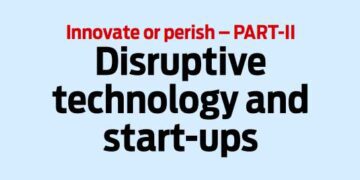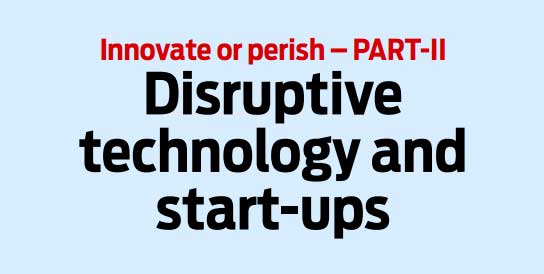 DISRUPTIVE technology is often viewed as a doubleedged sword. While it can create enormous opportunities for those who embrace it, it can also pose significant challenges for those who are slow to adapt. Businesses and industries that fail to keep up with disruptive technology risk becoming obsolete, while those that embrace it can gain a competitive advantage and thrive in the new market landscape.
DISRUPTIVE technology is often viewed as a doubleedged sword. While it can create enormous opportunities for those who embrace it, it can also pose significant challenges for those who are slow to adapt. Businesses and industries that fail to keep up with disruptive technology risk becoming obsolete, while those that embrace it can gain a competitive advantage and thrive in the new market landscape.
Whether a start-up should focus on disruptive technology depends on several factors, including the market they are targeting, the competition, and the resources available. Take two examples of Paytm from India and Spotify from United Kingdom.
Mobile payment concept
One of the best examples of disruptive technology in India is the mobile payment platform, Paytm. Paytm was launched in 2010 as a digital wallet service that allowed users to store money and make payments through their mobile phones. At the time of its launch, the concept of mobile payments was relatively new in India, and most transactions were still conducted using cash. As a result of these disruptive innovations, Paytm quickly gained popularity in India, and it currently has over 89 million users for January 2023 alone. Though Paytm suffered a major setback due a debacle during their IPO launch, they are working hard to stabilise their business. Paytm’s success has also inspired other companies to enter the mobile payment space, leading to increased competition and further innovation in the industry.
An example of disruptive technology in the UK is the music streaming service, Spotify. Prior to Spotify’s launch in 2008, the music industry was dominated by physical sales of CDs and digital downloads. However, Spotify disrupted this traditional model by offering a subscriptionbased streaming service that allowed users to access millions of songs on demand. As a result of these disruptive innovations, Spotify has become one of the most popular music streaming services in the world, with over 345 million active users and 155 million paying subscribers as of December 2020.
Risky and expensive
On the one hand, developing a disruptive technology can give a start-up a significant advantage over its competitors, as it can create a new market or disrupt an existing one. It can also attract investment and media attention, which can help the startup grow and succeed. On the other hand, developing a disruptive technology can be risky and expensive.
It may require significant resources, including research and development, as well as marketing and sales efforts to educate potential customers on the benefits of the new technology. Additionally, the market may not be ready for the technology, and the start-up may struggle to gain traction.
Ultimately, it is up to the startup to weigh the potential benefits and risks of developing a disruptive technology and determine if it aligns with their goals and resources. Some start-ups may choose to focus on incremental improvements to existing technologies or business models, while others may pursue more radical innovation.














 G20 podium
G20 podium

